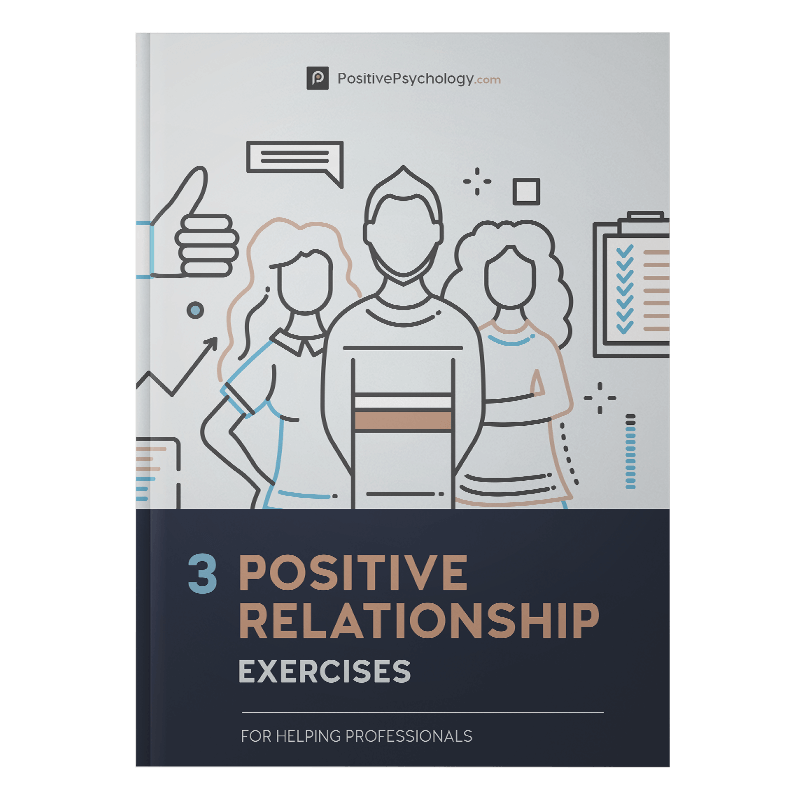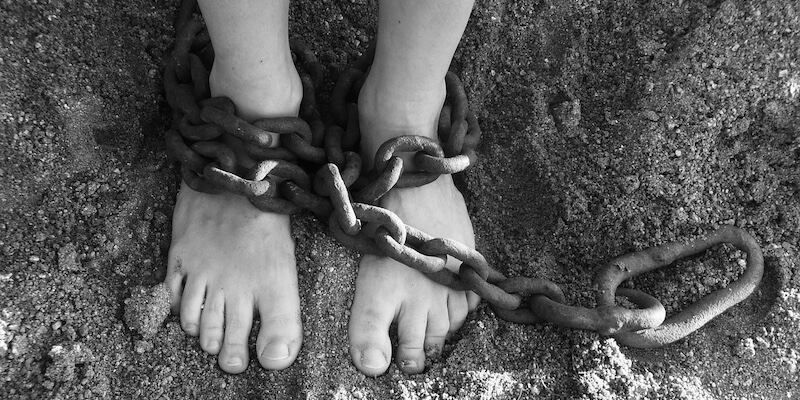What Is Bullying? A Look at Its Psychological Impact
 Bullying is certainly an unusual yet interesting phenomenon.
Bullying is certainly an unusual yet interesting phenomenon.
If you ask most people, they are likely to say that they have been the victim of a bully. They may even admit to being the bully. Others will tell you they have been a bully–victim. This is the dual experience of being the bully and the victim at different time points.
Bullying is a type of intimidation and verbal or physical harm to another (Juvonen & Graham, 2014), with an imbalance of power between the bully and the victim (Burger, Strohmeier, Spröber, Bauman, & Rigby, 2015). There are several idiosyncrasies about this concept that we will describe below.
This article is packed with valuable information about bullying, with all the interesting things you wanted to know. We hope the knowledge you gain from this post will allow you to support your clients in their sessions, whether they have been the victim, bully, or both.
Before you continue, we thought you might like to download our three Positive Relationships Exercises for free. These detailed, science-based exercises will help you or your clients build healthy, life-enriching relationships once they have overcome the trauma of bullying.
This Article Contains:
- What Is Bullying? 3 Facts
- 3 Real-Life Examples of Bullying
- 6 Types of Bullying According to Psychology
- 3 Effects of Bullying on Mental Health
- Why Does Bullying Happen? 3 Research Findings
- A Look at Anti-Bullying Programs in Schools & the Workplace
- Resources From PositivePsychology.com
- A Take-Home Message
- References
What Is Bullying? 3 Facts
What does psychology say about bullying and why does it happen? We answer your questions with a few interesting facts.
1. When does bullying most often occur?
Bullying persists at epidemic levels among children and adolescents (Harris, Lieberman, & Marans, 2007). It has been described as an adverse childhood experience (Stopbullying.gov, 2017).
Bullying is most common in childhood and adolescence (Aalsma & Brown, 2008). Up to three-quarters of young adolescents experience bullying (e.g., name-calling, embarrassment, or ridicule), and up to a third report coercion and even inappropriate touching (Juvonen, Nishina, & Graham, 2001).
2. Does bullying affect only the victim? How long do the effects last?
Bullying has been found to affect the bullied person as well as the bully. Both are at greater risk of mental and behavioral problems, including a higher risk of depression (Smokowski & Kopasz, 2005).
The poor physical and emotional outcomes of bullying can affect an individual, both in the short and long term (Centers for Disease Control and Prevention, 2021).
A plethora of research shows that bullying experienced in childhood can go on to cause anxiety and depression (Stapinski et al., 2014) in young and middle adulthood (Copeland, Wolke, Angold, & Costello, 2013).
Adult suicidal attempts (Stapinski et al., 2014), poor financial management (Wolke, Copeland, Angold, & Costello, 2013), and poor career success as an adult are all negative outcomes (Takizawa, Maughan, & Arseneault, 2014).
3. What type of profile does a bully or a victim possess?
There is not one single profile of a bully or someone affected by bullying. Bullies and victims can be socially included or marginally excluded (Stopbullying.gov, 2021). Either the bully or victim may have been in the role of a perpetrator and victim of bullying at some point in life (Leiner et al., 2014).
One interesting study found that bullies, victims, and those who have experienced both have a plethora of emotional, psychosocial, and behavioral problems (Leiner et al., 2014). This highlights that interventions are equally important for all groups, not only the victims.
3 Real-Life Examples of Bullying

1. Bullying in politics: Female minority bully and white male victim
Bullies do not always fit into the stereotypical image of the large, muscular male.
They come in all shapes and sizes. One recent high-profile story in politics about bullying is a clear example of a bully not fitting the stereotypical norm.
A senior civil servant for the UK government, Sir Philip Putnam, accused Priti Patel, the Home Secretary of the UK Home Office and a small woman of Indian ethnicity and Hindu faith, of bullying him. He also alleged that Priti Patel shouted, swore, and belittled other members of staff.
Sir Putnam placed a claim in court for unfair dismissal. This was settled out of court for £340,000, plus legal costs. This is an example of how bullies can cut across gender, race, faith, and size.
Read an overview of the story in this news article (Cahal, 2020).
2. Wrestling star John Cena bullied as a child
The powerful and strong World Wrestling Entertainment (WWE) wrestler John Cena might be the most unlikely victim of a bully you could imagine. Unfortunately, he was bullied as a child, and this led to him wrestling as an adult.
As a scrawny kid, he was bullied for wearing different clothes and having an unusual taste in music. He never fought back. Instead, he channeled this into a passion for strength. He began to work out and became more confident. His inner strength and determination to overcome the bullies led him to become more successful in life than the bullies themselves.
The story about the WWE star being bullied can be read at Movieweb (Sebren, 2021).
3. Being bullied for being different
It is a sad fact, but true. Bullies look for tiny differences and then target their victims by ridiculing their uniqueness (Thornberg & Delby, 2019).
One such story of bullying comes from Rosie, who was bullied for being on the autism spectrum. As she struggled with social communication, Rosie found it hard to make friends at school. When someone made friends with her, this person bullied Rosie and made her do things she did not want to. This went on for several years.
Rosie changed schools, yet the bullying continued. She endured verbal threats of harm, but because of her autism, she believed the threats would come true. Eventually, Rosie was encouraged to log the bullying into a diary by her therapist and then to show her teacher. The school put many interventions in place to stop the bullying. Rosie makes a strong point of saying that bullying is never the victim’s fault.
Rosie did eventually make some nice friends at the school, who are still her friends now.
Rosie’s story can be read at YoungMinds (2017).
6 Types of Bullying According to Psychology
Bullying can come in many forms. Sometimes it can be very subtle and at other times much stronger. Recognizing these signs can help reduce the incidents of bullying.
1. Physical bullying
Physical bullying is more obvious, as it is overt and comes in the form of hitting, punching, kicking, slapping, pushing, breaking, and damaging property.
If the physical abuse is directed at a person, it can cause both short-term and long-term injury and even result in a fatality. The signs of physical bullying are often visible in the presentation of the victim through their traumatized behavior or physical appearance (Brank, Hoetger, & Hazen, 2012).
2. Verbal bullying
Teasing, name-calling, and making derogatory and disparaging remarks and insults are all varied forms of verbal bullying. It often starts at a mild level but can become more severe, leading to emotional abuse and impacts on mental health (Juvonen, Graham, & Schuster, 2003).
3. Cyberbullying
Cyberbullying is the new form of bullying in the era of technology. It has become a growing problem over recent years and has doubled in the past decade (Patchin & Hinduja, 2020). At least 59% of teenagers report being cyberbullied and harassed (Anderson, 2018).
Cyberbullying is intentional harm to another individual through the use of digital technology, such as via the internet or text messages (Cross, 2014). A primary channel for cyberbullying is the use of social media platforms (Stopbullying.gov, 2021).
4. Sexual bullying
Sexual bullying can happen to all age groups, but it is often most prevalent among young people (Spears, Jennifer, & Williams, 2011). This type of bullying can involve inappropriate sexual names, being sent images, jokes, spreading sexual rumors, touching, grabbing and pinching, and language that causes embarrassment and fear (Nemours Children’s Health, 2019).
At least 81% of women and 43% of men reported some form of sexual harassment or assault in their lifetime (Adams et al., 2019).
5. Racist bullying
Racist bullying is a type of bullying whereby people are bullied for their color or ethnic background (Rodriguez-Hidalgo, Yisela, Dios, & Daniel, 2020). Racist bullying sees people called names by their peers or excluded from groups because of hatred, fear, or just because they are misunderstood.
Racist bullying can often cause people to feel embarrassed about their ethnic background or the color of their skin (Gee, Hing, Mohammed, Tabor, & David, 2019).
6. LGBTQ+ bullying
When someone is verbally or physically harassed for their sexual orientation, this is referred to as LGBTQ+ bullying (Earnshaw et al., 2020).
This type of bullying can include physical, verbal, cyber, and sexual bullying. A person does not necessarily have to be LGBTQ+ to experience this type of bullying, and it may be directed at those merely perceived to be different and non-conforming.
3 Effects of Bullying on Mental Health

1. Psychosocial effects of bullying throughout adolescence and young adulthood
There are many psychosocial consequences for victims of bullying, including increased rates of depression, suicidal ideation, and loneliness (Nansel et al., 2001; van der Wal, de Wit, & Hirasing, 2003).
School-aged children who experience bullying often show lower grades, a dislike of school, and absenteeism (Juvonen et al., 2001). Young adults who were victimized as children or adolescents have increased rates of violence-related behaviors compared to those not involved in bullying (Nansel et al., 2001).
One study showed that young people who had been bullied repeatedly through school had lower self-esteem and higher depressive symptoms than those who had not been bullied, especially when they got older (Olweus, 2013).
2. Bullies at risk of poor mental health effects
It is not only the victims who suffer from bullying, it is also the bullies themselves. Evans et al. (2019) found that bullies experienced anti-social behaviors, such as school problem behaviors, substance misuse, and generally aggressive behaviors.
In another study, da Silva et al. (2016) found a strong association between bullying perpetration and mental health problems among a sample of 13,200 young people aged 12 to 17 years old. It also found that those who experienced a high level of internalizing problems were often the perpetrators of bullying. This highlighted a bi-directional association between bullying and internalizing problems.
3. Mental health effects of bystanders to bullying
Bystanders to bullying have also been found to experience poor mental health. When bullying occurs, bystanders are present at least 80% of the time (Polanin, Espelage, & Pigott, 2012).
Evans et al. (2019) showed that those people who witnessed bullying experienced increased anxiety and depression, regardless of whether they supported the bully or the person who was being bullied.
This is most likely because bystanders experience stress and anxiety related to a fear of retaliation and being bullied themselves (Forsberg et al., 2018). They may experience guilt because they wanted to intervene but did not do so.
Why Does Bullying Happen? 3 Research Findings
Bullying really is an intriguing phenomenon and goes far beyond what it seems to be on the surface. So, let us look deeper into the reasons behind bullying and why it occurs.
1. Gaining power and popularity
Research has shown that bullies may behave in such a manner to gain popularity. Guy, Lee, and Dieter (2019) found that bullies scored higher for perceived popularity. It also appears from this study that bullies are socially rewarded by peers for their victimization.
There are many other ways of gaining popularity, so why would a person want to bully rather than use positive behaviors to gain popularity?
One reason could be that the bullies have been socially marginalized and rejected by their peers (Cook, Williams, Guerra, & Kim, 2010). In addition, bullying may be used to access resources and gain social dominance (Olthof, Goossens, Vermande, Aleva, & Van der Meulen, 2011). Overall, it is not positive in the long term to gain popularity this way. A more prosocial manner of gaining popularity should be promoted, rather than bullying.
2. Seeking revenge and retaliation
Bullying is significantly related to revenge and retaliation. Saricam and Cetinkaya (2017) investigated strategies for coping with bullying among 318 high school children and found that taking revenge was considered the best way to deal with bullying.
In fact, it appears from another study that students who have been victims of bullying often bully their former perpetrators through cyberbullying, given the ease and non-confrontational yet revengeful manner in which this type of bullying can be performed (König, Gollwitzer, & Steffgen, 2010).
3. Problematic home life
The home life of a bully is often problematic and fraught with difficulties. Lucas, Jernbro, Tindberg, and Janson (2016) found that bullies were often exposed to domestic violence at home and concluded that bullying experiences are clearly associated with abuse.
In this research, physical and emotional violence in the home was significantly associated with bullying among 24% of girls from the sample and 36% of boys. As the frequency and severity of abuse in the home rose, so did the prospects of bullying behavior.
A Look at Anti-Bullying Programs in Schools & the Workplace

1. Anti-bullying programs for schools
A recent systematic and meta-analytical review of school-based anti-bullying programs found that programs were effective in reducing school bullying, perpetration, and victimization (Gaffney, Farrington, & Ttofi, 2019).
The National Society for the Prevention of Cruelty to Children has an abundance of anti-bullying resources for schools to implement into programs. Their website resources include a toolkit, podcast, online training materials, free anti-bully policy statements, activities for teachers and young people, and how to protect children from bullying and cyberbullying.
2. Anti-bullying programs for work
Dr. Joel Haber is a bullying expert who provides organizations with diagnostics, assessments, and training initiatives, which include workshops and master groups.
These are provided in trainings, by phone, and via videoconferencing, and include role-play and communication exercises. The training he provides can be swiftly adapted where workplace bullying is a concern.
Dr. Haber also analyzes the effectiveness of existing policies and procedures. More information on Dr. Haber’s workplace bullying programs can be found on his website.
Resources From PositivePsychology.com
There is no straightforward strategy to tackle bullying, whether it is in the school or in the workplace. However, we have several resources that can help your clients improve their coping skills and manage their emotions. This could help them avoid being either the bully or the victim.
1. Workplace Mindfulness
Adopting love and kindness in the workplace to ourselves and others can create a more positive organizational culture and potentially deter the possibility of bullying.
This worksheet helps clients focus on short-term goals and aspirations at work and incorporates the three elements of mindfulness: intention, attention, and attitude.
2. Self-Control Spotting
Bullying others may start from a loss of self-control. It is important that clients recognize behaviors that lead to self-control and those that do not. Such awareness could stop bullying behaviors before they have a chance to start.
3. Emotional Regulation Worksheet for Adults
This worksheet helps clients recognize and regulate their emotions. It walks clients through what happened, why it happened, how it made them feel, and how they reacted. It can be used for any bullying-related incidents at school or work and allows the client to reflect and make changes.
If you’re looking for more science-based ways to help others build healthy relationships, this collection contains 17 validated positive relationships tools for practitioners. Use them to help others form healthier, more nurturing, and life-enriching relationships.
A Take-Home Message
Bullying can affect young and old alike. It occurs in interactions with others, often at school and work.
The victim and the perpetrator are not always clearly defined. The characteristics of both bully and victim can be wide ranging. Bullying can have short-lived consequences but also a long-term impact.
Bullying can range from brutal physical harm to more subtle psychological and indirect forms. We know that it affects the bully, victim, and bystander, so this game really has no winners.
Bullying interventions and support are required not only in the school and workplace, but also in the home and on an individual level. A holistic approach is required to deter bullying in society.
We hope this article has initiated more thought about how you can now support your clients in sessions if they have been bullied and help them rebuild with more positive relationships. Don’t forget to download our three Positive Relationships Exercises for free.
- Aalsma, M. C., & Brown, J. R. (2008). What is bullying? Journal of Adolescent Health, 43(2), 101–102.
- Adams, L., Hilger, L., Moselen, E., Basi, T., Gooding, O., & Hull, J. (2019). 2020 sexual harassment survey. Government Equalities Office. Crown Copyright.
- Anderson, M. (2018, September 27). A majority of teens have experienced some form of cyberbullying. Pew Research Center. Retrieved December 3, 2021, from
https://www.pewresearch.org/internet/2018/09/27/a-majority-of-teens-have-experienced-some-form-of-cyberbullying/ - Brank, E. M., Hoetger, L., & Hazen, K. P. (2012). Bullying. The Annual Review of Law and Social Science, 8, 213–230.
- Burger, C., Strohmeier, D., Spröber, N., Bauman, S., & Rigby, K. (2015). How teachers respond to school bullying: An examination of self-reported intervention strategy use, moderator effects, and concurrent use of multiple strategies. Teaching and Teacher Education, 51, 191–202.
- Cahal, J. (2020, February 20). ‘Bully’ Patel demanded removal of Home office top official. Westminster Daily. Retrieved January 18, 2022, from https://www.westminster-daily.com/2020/02/20/bully-patel-demanded-removal-of-home-office-top-official/
- Centers for Disease Control and Prevention. (2021, September 2). Preventing bullying. Retrieved December 2, 2021, from
https://www.cdc.gov/violenceprevention/youthviolence/bullyingresearch/fastfact.html - Cook, C. R., Williams, K. R., Guerra, N. G., & Kim, T. E. (2010). Variability in the prevalence of bullying and victimization: A cross-national and methodological analysis. In S. R. Jimerson, S. M. Swearer, & D. L. Espelage (Eds.). Handbook of bullying in schools: An international perspective. Routledge.
- Copeland, W. E., Wolke, D., Angold, A., & Costello, E. J. (2013). Adult psychiatric outcomes of bullying and being bullied by peers in childhood and adolescence. JAMA Psychiatry, 70, 419–426.
- Cross, M. (2014). The dark side. In M. Cross (Ed.), Social media security. Syngress.
- da Silva, J. L., de Oliveira, W. A., Braga, I. F., Farias, M. S., de Silva Lizzi, E. A., Gonçalves, M. F. C., … Silva, M. A. I. (2016). The effects of a skill-based intervention for victims of bullying in Brazil. International Journal of Environmental Research and Public Health, 13(11), 1042.
- Earnshaw, V. A., Menino, D. D., Sava, L. M., Perrotti, J., Barnes, T. N., Humphrey, D. L., & Reisner, S. L. (2020). LGBTQ bullying: A qualitative investigation of student and school health professional perspectives. Journal of LGBT Youth, 17(3), 280–297.
- Evans, C. B. R., Smokowski, P. R., Rose, R. A., Mercado, M. C., & Marshall, K. J. (2019). Cumulative bullying experiences, adolescent behavioral and mental health, and academic achievement: An integrative model of perpetration, victimization, and bystander behavior. Journal of Child and Family Studies, 28, 2415–2428.
- Forsberg, C., Wood, L., Smith, J., Varjas, K., Meyers, J., Jungert, T., & Thornberg, T. (2018). Students’ views of factors affecting their bystander behaviors in response to school bullying: A cross-collaborative conceptual qualitative analysis. Research Papers in Education, 33(1), 127–142.
- Gaffney, H., Farrington, D. P., & Ttofi, M. M. (2019). Examining the effectiveness of school-bullying intervention programs globally: A meta-analysis. International Journal of Bullying Prevention, 1, 14–31.
- Gee, G. C., Hing, A., Mohammed, S., Tabor, D. C., & David, R. (2019). Racism and the life course: Taking time seriously. American Journal of Public Health, 109(1), 43–47.
- Guy, A., Lee, K., & Dieter, W. (2019). Comparisons between adolescent bullies, victims, and bully-victims on perceived popularity, social impact, and asocial preference. Frontiers in Psychiatry, 10, 868.
- Harris, W. W., Lieberman, A. F., & Marans, S. (2007). In the best interests of society. Journal of Child Psychology and Psychiatry, 48(3/4), 392–411.
- Juvonen, J., Graham, S., & Schuster, M. A. (2003). Bullying among young adolescents: The strong, the weak, and the troubled. Pediatrics, 112(6/1), 1231–1237.
- Juvonen, J., & Graham, S. (2014). Bullying in schools: The power of bullies and the plight of victims. Annual Review of Psychology, 65(1), 159–185
- Juvonen, J., Nishina, A., & Graham, S. (2001). Peer harassment, psychological adjustment, and school functioning in early adolescence. Journal of Educational Psychology, 92, 349–359.
- König, A., Gollwitzer, M., & Steffgen, G. (2010). Cyberbullying as an act of revenge? Australian Journal of Guidance and Counselling, 20(2), 210–224.
- Leiner, M., Alok, D., Villanos, M. T., Singh, N., Blunk, D., & Peinado, J. (2014). Psychosocial profile of bullies, victims, and bully-victims: A cross-sectional study. Frontiers in Pediatrics, 2, 1.
- Lucas, S., Jernbro, C., Tindberg, Y., & Janson, S. (2016). Bully, bullied and abused. Associations between violence at home and bullying in childhood. Scandinavian Journal of Public Health, 44(1), 27–35.
- Nansel, T. R., Overpeck, M., Pilla, R. S., Ruan, J., Simons-Morton, B., & Scheidt, P. (2001). Bullying behaviors among U.S. youth: Prevalence and association with psychosocial adjustment. Journal of the American Medical Association, 285, 2094–2100.
- Nemours Children’s Health. (2019). What is bullying? Retrieved December 6, 2021, from https://kidshealth.org/en/teens/bullies.html
- Olthof, T., Goossens, F. A., Vermande, M. M., Aleva, E. A., & Van der Meulen, M. (2011). Bullying as strategic behavior: Relations with desired and acquired dominance in the peer group. Journal of School Psychology, 49, 339–359.
- Olweus, D. (2013). School bullying: Development and some important challenges. Annual Review of Clinical Psychology, 9, 751–780.
- Patchin, J. W., & Hinduja, S. (2020). It is time to teach safe sexting. Journal of Adolescent Health, 66(2), 140–143.
- Polanin, J., Espelage, D., & Pigott, T. (2012). A meta-analysis of school-based bullying prevention programs’ effects on bystander intervention behavior. School Psychology Review, 41(1), 47–65.
- Rodriguez-Hidalgo, A. J., Yisela, P., Dios, I., & Daniel, F. (2020). Stress, and anxiety in university undergraduate students: A predictive model for depression. Frontiers in Psychology, 11, 3041.
- Saricam, H., & Cetinkaya, C. (2017). Exploring revenge as a mediator between bullying and victimization in gifted and talented students. Current Issues in Personality Psychology, 6(2), 102–111.
- Sebren, B. L. (2021, July 28). John Cena began working out at age 13 just to stop bully beatdowns. Movieweb. Retrieved December 10, 2021, from https://movieweb.com/john-cena-work-out-13-years-old-bully/
- Smokowski, P. R., & Kopasz, K. H. (2005). Bullying in school: An overview of types, effects, family characteristics, and intervention strategies. Children & Schools, 27(2), 101–110.
- Spears, B. A., Jennifer, D., & Williams, S. (2011). Girls, verbal sexual harassment and sexual bullying: implications for wellbeing. In R. H. Shute (Ed.), Mental health and wellbeing: Educational perspectives. Shannon Research Press.
- Stapinski, L. A., Bowes, L., Wolke, D., Pearson, R. M., Mahedy, L., Button, K. S., … Araya, R. (2014). Peer victimization during adolescence and risk for anxiety disorders in adulthood: A prospective cohort study. Depression and Anxiety, 31(7), 574–582.
- Stopbullying.gov. (2017). Bullying as an adverse childhood experience (ACE). Retrieved December 3, 2021, from https://www.stopbullying.gov/sites/default/files/2017-10/bullying-as-an-ace-fact-sheet.pdf
- Stopbullying.gov. (2021). Facts about bullying. Retrieved December 4, 2021, from https://www.stopbullying.gov/resources/facts
- Takizawa, R., Maughan, B., & Arseneault, L., (2014). Adult health outcomes of childhood bullying victimization: Evidence from a five-decade longitudinal British birth cohort. The American Journal of Psychiatry, 171(7), 777–784.
- Thornberg, R., & Delby, H. (2019). How do secondary school students explain bullying? Educational Research, 61(2), 142–160.
- van der Wal, M. F., de Wit, C. A. M., & Hirasing, R. A. (2003). Psychosocial health among young victims and offenders of direct and indirect bullying. Pediatrics, 111, 1312–1317.
- Wolke, D., Copeland, W. E., Angold, A., & Costello, E. J. (2013). Impact of bullying in childhood on adult health, wealth, crime, and social outcomes. Psychological Science, 24(10), 1958–1970.
- YoungMinds. (2017, November 13). Rosie’s story: Bullying and autism. Retrieved December 2, 2021, from https://www.youngminds.org.uk/young-person/blog/rosie-s-story-bullying-and-autism/
Read other articles by their category
- Body & Brain (50)
- Coaching & Application (57)
- Compassion (26)
- Counseling (51)
- Emotional Intelligence (24)
- Gratitude (18)
- Grief & Bereavement (21)
- Happiness & SWB (40)
- Meaning & Values (26)
- Meditation (20)
- Mindfulness (45)
- Motivation & Goals (45)
- Optimism & Mindset (34)
- Positive CBT (29)
- Positive Communication (20)
- Positive Education (47)
- Positive Emotions (33)
- Positive Leadership (18)
- Positive Parenting (4)
- Positive Psychology (33)
- Positive Workplace (37)
- Productivity (17)
- Relationships (46)
- Resilience & Coping (38)
- Self Awareness (21)
- Self Esteem (38)
- Strengths & Virtues (32)
- Stress & Burnout Prevention (34)
- Theory & Books (46)
- Therapy Exercises (37)
- Types of Therapy (64)





